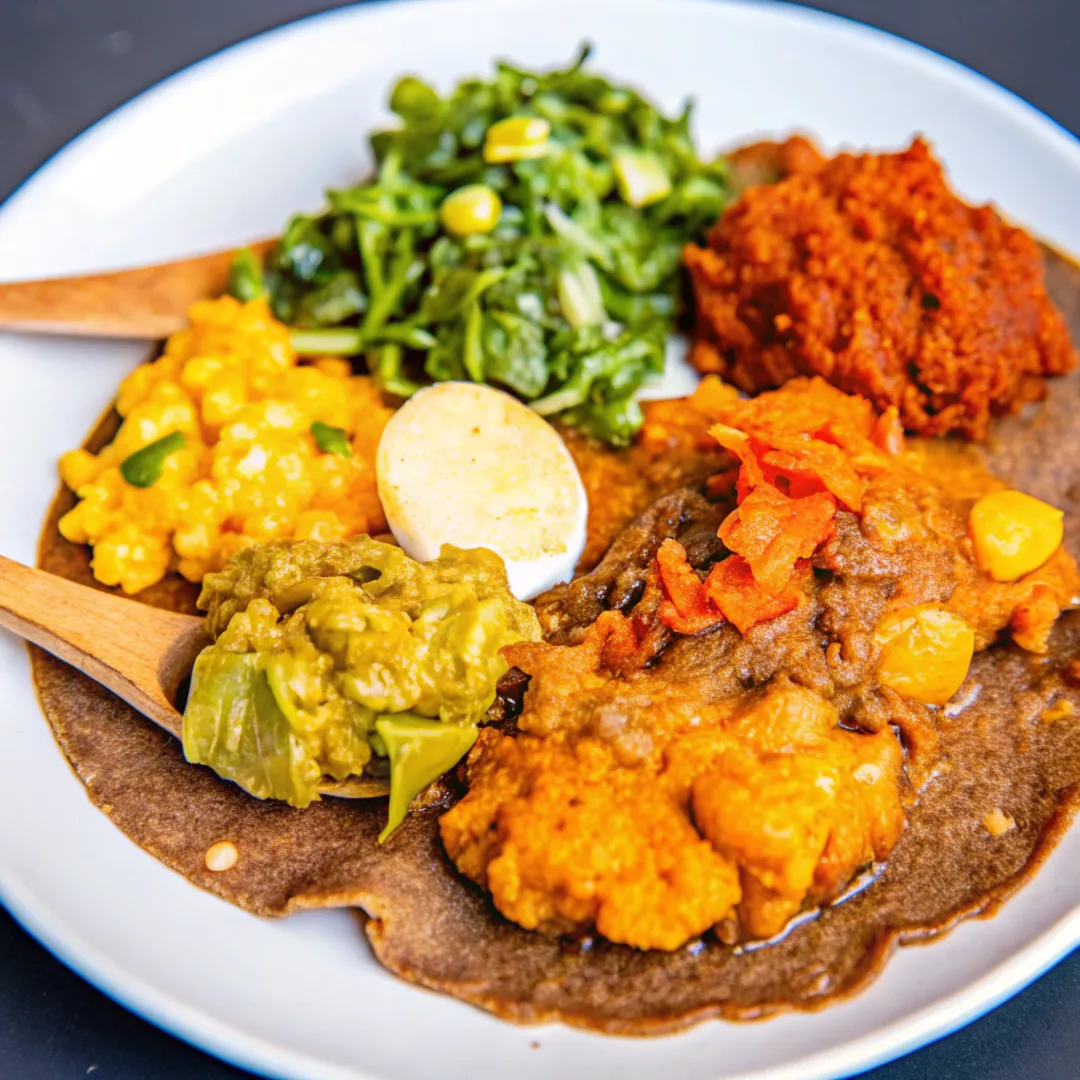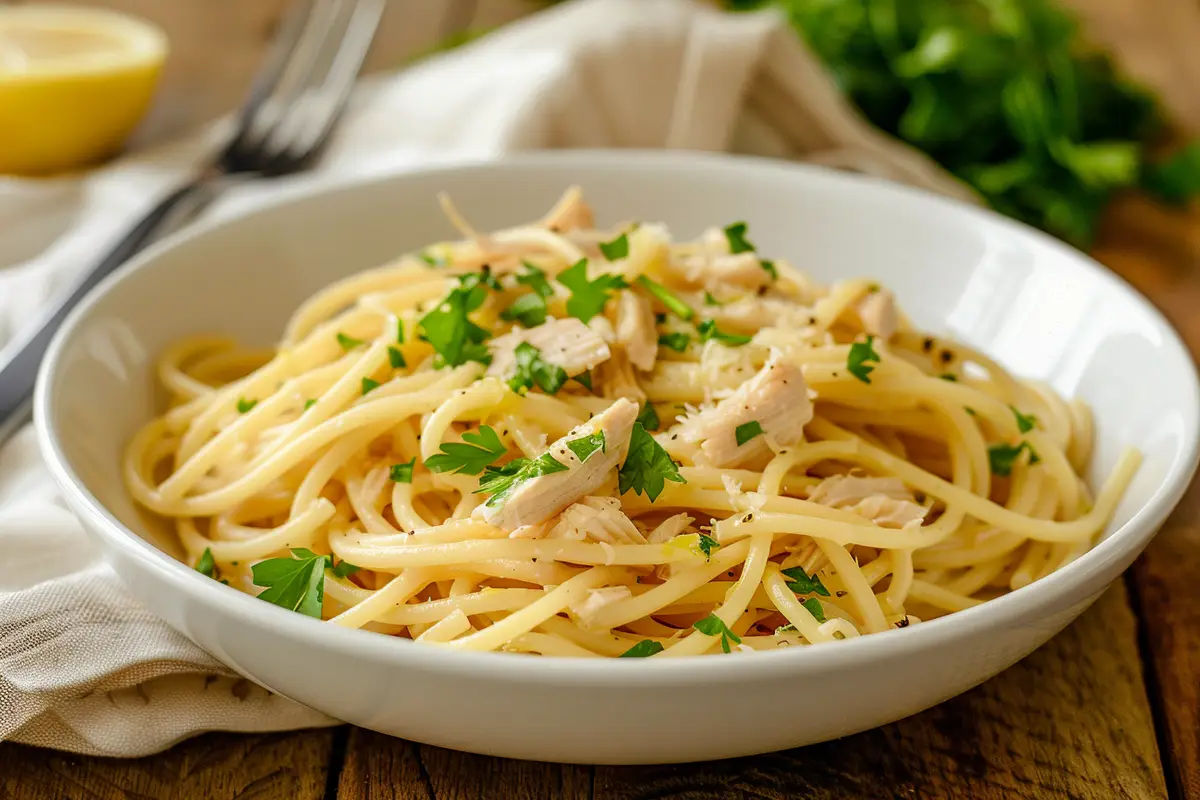Ethiopian cuisine is a plant-based paradise, offering a rich variety of stews, vegetables, and flavorful spices. With a strong tradition of meat-free meals, Ethiopian Vegan Food Recipes are not just delicious but also deeply rooted in history and culture. From spicy lentil stews to injera, the beloved sourdough flatbread, Ethiopian dishes are known for their complex flavors and health benefits. In this article, we’ll explore the key ingredients, traditional dishes, and step-by-step recipes to help you bring Ethiopian flavors to your home kitchen.
Table of Contents
Introduction to Ethiopian Vegan Cuisine
The Roots of Ethiopian Plant-Based Eating
Ethiopian Vegan Food Recipes has a long tradition of plant-based eating, making it a haven for vegans and vegetarians. The country’s Orthodox Christian community observes fasting periods throughout the year, during which they abstain from all animal products. This has led to the creation of numerous naturally vegan dishes that are both flavorful and satisfying.
Unlike many cuisines where vegan dishes are adaptations of meat-based meals, Ethiopian vegan food recipes have been an integral part of the culture for centuries. These dishes are centered around lentils, chickpeas, vegetables, and bold spice blends, making them hearty, nutritious, and deeply aromatic.
Key Ingredients in Ethiopian Vegan Cooking
Authentic Ethiopian Vegan Food Recipes relies on a handful of staple ingredients that create its unique flavors:
- Teff Flour – Used to make injera, Ethiopia’s signature sourdough flatbread.
- Lentils and Chickpeas – Commonly found in stews like Misir Wat and Shiro Wat.
- Berbere Spice – A bold, aromatic spice blend featuring chili peppers, garlic, ginger, and warming spices.
- Niter Kibbeh (Vegan Version) – A spiced butter traditionally used in Ethiopian cooking; vegans can make a plant-based version with coconut or olive oil.
- Greens and Vegetables – Collard greens, cabbage, carrots, and tomatoes are frequently used in Ethiopian dishes.
With these key ingredients, you can recreate the rich and spicy flavors that define Ethiopian vegan food recipes at home.
Traditional Ethiopian Vegan Dishes
Ethiopian Vegan Food Recipes offers a variety of plant-based stews and side dishes, each bursting with spice and flavor. Below are two of the most popular and beloved Ethiopian vegan food recipes.
Misir Wat (Spicy Red Lentil Stew)
Misir Wat is a rich and spicy lentil stew cooked with Berbere spice and simmered to perfection. It’s a staple in Ethiopian households and is often served with injera.
Ingredients:
- 1 cup red lentils
- 2 tbsp olive oil
- 1 medium onion, finely chopped
- 3 cloves garlic, minced
- 1 tbsp ginger, grated
- 2 tbsp Berbere spice
- 2 cups vegetable broth
- Salt to taste
Instructions:
- Heat olive oil in a pan over medium heat. Add onions and sauté until soft.
- Stir in garlic, ginger, and Berbere spice. Cook for another minute until fragrant.
- Add red lentils and mix well to coat them with the spice mixture.
- Pour in vegetable broth and bring to a boil. Reduce heat and let it simmer for 20 minutes or until lentils are soft.
- Season with salt and serve hot with injera.
Shiro Wat (Chickpea Stew)
Shiro Wat is a creamy and spicy chickpea flour-based stew, loved for its rich texture and deep flavors.
Ingredients:
- ½ cup chickpea flour
- 2 tbsp olive oil
- 1 medium onion, finely chopped
- 2 cloves garlic, minced
- 1 tbsp Berbere spice
- 2 cups vegetable broth
- Salt to taste
Instructions:
- Heat olive oil in a pan and sauté onions until golden.
- Add garlic and Berbere spice, stirring well.
- Slowly whisk in chickpea flour and mix until combined.
- Gradually pour in vegetable broth while stirring to avoid lumps.
- Simmer on low heat for 10 minutes until thickened.
- Serve with injera or rice.
Both of these Ethiopian vegan food recipes showcase the depth of flavor and warmth that Ethiopian cuisine is known for.
Injera – The Foundation of Ethiopian Cuisine
What Is Injera?
Injera is the heart of Ethiopian Vegan Food Recipes. This spongy, tangy flatbread is made from teff flour, a nutrient-rich grain native to Ethiopia. Injera is more than just bread—it serves as a utensil, soaking up the flavors of the stews and making every bite delicious.
How to Make Authentic Teff Injera at Home
While traditional injera requires fermentation, this quick version offers a similar taste and texture.
Ingredients:
- 2 cups teff flour
- 2½ cups water
- ½ tsp salt
- ½ tsp baking powder (for a quicker version)
Instructions:
- In a bowl, mix teff flour, water, and salt. Let it sit overnight to ferment for authentic flavor. If short on time, add baking powder.
- Heat a non-stick pan over medium heat. Pour a thin layer of batter and cover with a lid.
- Cook for 2-3 minutes until bubbles form and the surface is dry.
- Remove from the pan and let it cool before serving.
Injera is essential in Ethiopian vegan food recipes, as it complements stews and vegetables perfectly.
Flavorful Ethiopian Vegetable Dishes
Ethiopian cuisine features a variety of vegetable-based stews and side dishes that are both nutritious and flavorful. Here are two must-try Ethiopian vegan food recipes that highlight the rich use of spices and seasonal vegetables.
Gomen (Ethiopian Collard Greens)
Gomen is a simple yet flavorful dish made with collard greens, garlic, and mild spices. It’s a staple side dish in Ethiopian Vegan Food Recipes and pairs perfectly with injera.
Ingredients:
- 1 bunch collard greens (or kale), chopped
- 2 tbsp olive oil
- 1 medium onion, finely chopped
- 3 cloves garlic, minced
- 1 tsp ginger, grated
- ½ tsp turmeric
- ½ tsp salt
- ½ cup water
Instructions:
- Heat olive oil in a pan over medium heat. Add onions and sauté until soft.
- Stir in garlic, ginger, and turmeric, cooking for another minute.
- Add the chopped collard greens and salt, stirring well to combine.
- Pour in water, cover the pan, and let the greens steam for 10 minutes until tender.
- Serve hot with injera or rice.
Atakilt Wat (Cabbage and Carrot Stew)
Atakilt Wat is a comforting vegetable stew made with cabbage, carrots, and potatoes, all slow-cooked with Ethiopian spices.
Ingredients:
- ½ head cabbage, chopped
- 2 carrots, sliced
- 2 potatoes, diced
- 2 tbsp olive oil
- 1 medium onion, finely chopped
- 2 cloves garlic, minced
- 1 tsp turmeric
- ½ tsp cumin
- ½ tsp salt
- ½ cup water
Instructions:
- Heat olive oil in a pan and sauté onions until soft.
- Add garlic, turmeric, and cumin, stirring for a minute.
- Add carrots, potatoes, and cabbage, mixing well with the spices.
- Pour in water, cover, and let it simmer for 15 minutes until vegetables are tender.
- Serve warm with injera or as a side dish.
Both of these Ethiopian vegan food recipes highlight the simplicity and deliciousness of Ethiopian vegetable dishes.

Ethiopian Spices and Their Role in Vegan Cooking
Spices are the soul of Ethiopian cuisine, adding depth and heat to every dish. Here are two essential spices that make Ethiopian vegan food recipes truly stand out.
Berbere: The Signature Spice Blend
Berbere is the key spice blend in Ethiopian cooking, giving dishes their signature fiery and aromatic flavor.
Homemade Berbere Spice Blend Recipe:
- 2 tbsp paprika
- 1 tbsp cayenne pepper (adjust for spice level)
- 1 tsp garlic powder
- 1 tsp onion powder
- 1 tsp ground ginger
- 1 tsp ground cumin
- ½ tsp ground cinnamon
- ½ tsp ground coriander
- ½ tsp ground fenugreek
- ½ tsp black pepper
- ½ tsp salt
Instructions:
- Mix all ingredients in a bowl.
- Store in an airtight container.
- Use in stews, lentils, and vegetable dishes.
Niter Kibbeh: Vegan Spiced Butter Alternative
Niter Kibbeh is traditionally a clarified butter infused with spices. This vegan version retains the rich, fragrant taste using plant-based oils.
Ingredients:
- ½ cup coconut oil (or olive oil)
- 1 tsp turmeric
- 1 tsp ground cardamom
- ½ tsp cinnamon
- 1 clove garlic, minced
- ½ tsp ground fenugreek
Instructions:
- Heat oil in a pan over low heat.
- Add all spices and garlic, stirring well.
- Simmer for 5 minutes, then remove from heat.
- Strain (if desired) and store in a jar.
Both of these spice blends are essential for preparing authentic Ethiopian vegan food recipes at home.
Ethiopian Breakfast Ideas for Vegans
Ethiopian breakfasts are hearty, plant-based, and full of flavor. Here are two traditional Ethiopian Vegan Food Recipes for breakfasts to start your day the Ethiopian way.
Firfir (Injera Stir-Fry)
Firfir is a popular Ethiopian breakfast made by stir-frying torn pieces of injera with berbere spice and onions.
Ingredients:
- 2 pieces injera, torn into bite-sized pieces
- 1 tbsp olive oil
- 1 medium onion, chopped
- 2 cloves garlic, minced
- 1 tsp Berbere spice
- ½ cup water
Instructions:
- Heat oil in a pan over medium heat. Add onions and sauté until soft.
- Stir in garlic and Berbere spice, cooking for a minute.
- Add torn injera pieces and mix well.
- Pour in water and stir until the injera absorbs the flavors.
- Serve hot for a satisfying, spicy breakfast.

Kinche (Ethiopian Spiced Oatmeal)
Kinche is a simple, nourishing breakfast made with cracked wheat or oats, lightly seasoned with spices.
Ingredients:
- 1 cup rolled oats (or cracked wheat)
- 2 cups water
- ½ tsp salt
- 1 tbsp vegan Niter Kibbeh (spiced butter)
Instructions:
- Bring water to a boil in a saucepan.
- Add oats and salt, cooking until soft.
- Stir in Niter Kibbeh for extra flavor.
- Serve warm, optionally topped with nuts or dried fruits.
These Ethiopian vegan food recipes for breakfast offer a delicious start to your day with traditional Ethiopian flavors.
Ethiopian Vegan Side Dishes and Snacks
Ethiopian Vegan Food Recipes are typically served with multiple small side dishes that add variety and depth to the meal. Here are two easy-to-make vegan side dishes that complement any Ethiopian feast.
Azifa (Lentil Salad)
Azifa is a refreshing lentil salad served cold, making it a perfect side dish or light meal. It’s packed with protein and infused with zesty lemon and mild spices.
Ingredients:
- 1 cup green lentils, cooked and drained
- 1 small red onion, finely chopped
- 2 tbsp lemon juice
- 2 tbsp olive oil
- 1 tsp mustard
- ½ tsp salt
- ½ tsp black pepper
- 1 small jalapeño, finely diced (optional)
Instructions:
- In a bowl, mix the cooked lentils with the chopped onion.
- Add lemon juice, olive oil, mustard, salt, and black pepper. Stir well.
- For extra spice, mix in the jalapeño.
- Refrigerate for 30 minutes before serving.
Timatim (Spiced Tomato Salad)
Timatim is a light and refreshing tomato salad infused with Ethiopian flavors. It’s often served as a cooling contrast to spicy stews.
Ingredients:
- 2 large tomatoes, diced
- 1 small red onion, thinly sliced
- 1 tbsp lemon juice
- 1 tbsp olive oil
- ½ tsp salt
- ½ tsp Berbere spice
- 1 tbsp chopped fresh cilantro
Instructions:
- In a bowl, combine diced tomatoes and sliced onions.
- Drizzle with lemon juice and olive oil.
- Sprinkle with salt and Berbere spice.
- Garnish with fresh cilantro and serve immediately.
These easy side dishes are the perfect complement to Ethiopian vegan food recipes, adding freshness and spice to the meal.
Health Benefits of Ethiopian Vegan Food
Ethiopian Vegan Food Recipes is not only delicious but also incredibly nutritious. Many of the staple ingredients offer a variety of health benefits.
Nutritional Value of Ethiopian Ingredients
- Teff (Injera’s main ingredient): High in protein, iron, calcium, and fiber, making it a great choice for digestive health.
- Lentils and Chickpeas: Excellent sources of plant-based protein, fiber, and essential vitamins.
- Berbere Spice: Contains anti-inflammatory properties from ingredients like chili, ginger, and garlic.
- Dark Leafy Greens (Collard Greens, Kale): Rich in vitamins A, C, and K, and packed with antioxidants.
- Healthy Fats (Olive Oil, Coconut Oil): Support heart health and help with nutrient absorption.
Why Are Ethiopians So Healthy?
Many Ethiopians maintain a plant-based diet rich in fiber, antioxidants, and healthy fats. Additionally, the traditional practice of fasting, which includes avoiding animal products for long periods, has been linked to longevity and reduced risk of chronic diseases.
FAQs About Ethiopian Vegan Food
What Ethiopian dishes are vegan?
Many traditional Ethiopian dishes are naturally vegan, including Misir Wat (spicy red lentil stew), Shiro Wat (chickpea stew), Gomen (collard greens), Atakilt Wat (cabbage and carrot stew), Azifa (lentil salad), and Timatim (spiced tomato salad). Injera, the staple flatbread, is also plant-based when made with teff flour.
Is Ethiopia a vegan country?
Ethiopia is not strictly a vegan country, but it has a deep-rooted tradition of plant-based eating. Due to religious fasting periods in the Ethiopian Orthodox Church, many Ethiopians follow a vegan diet for a significant part of the year.
Why is so much Ethiopian food vegan?
Ethiopian Vegan Food Recipes includes a wide range of naturally vegan dishes due to religious fasting traditions, which prohibit the consumption of animal products. This has led to the development of flavorful and satisfying plant-based meals that have been part of the culture for centuries.
What is the most famous Ethiopian dish?
One of the most famous Ethiopian dishes is Doro Wat, a spicy chicken stew. However, for vegans, Misir Wat (spicy red lentil stew) is one of the most well-known and widely enjoyed plant-based dishes.
Why are Ethiopians so healthy?
Ethiopian diets are rich in whole foods, including lentils, vegetables, whole grains, and healthy fats. The emphasis on spices, fiber-rich ingredients, and fermented foods like injera contributes to overall health and well-being. Additionally, fasting traditions may support metabolic health and longevity.
What do Ethiopians eat for breakfast?
Common Ethiopian breakfast foods include Firfir (injera stir-fry), Kinche (spiced oatmeal or cracked wheat porridge), and Shiro (chickpea stew), all of which are vegan-friendly options.
Conclusion
Ethiopian Vegan Food Recipes is a celebration of bold flavors, nutritious ingredients, and deeply rooted traditions. From lentil stews to fresh salads, there is no shortage of delicious plant-based dishes to enjoy. Whether you’re looking for a comforting meal like Misir Wat, a quick snack like Azifa, or the perfect injera to scoop it all up, Ethiopian food offers something for everyone.
Try these Ethiopian vegan food recipes at home and experience the rich, spiced flavors of one of the world’s most unique plant-based cuisines!
“Don’t miss our The Best Vegenaise Recipe for more plant-based condiments!







